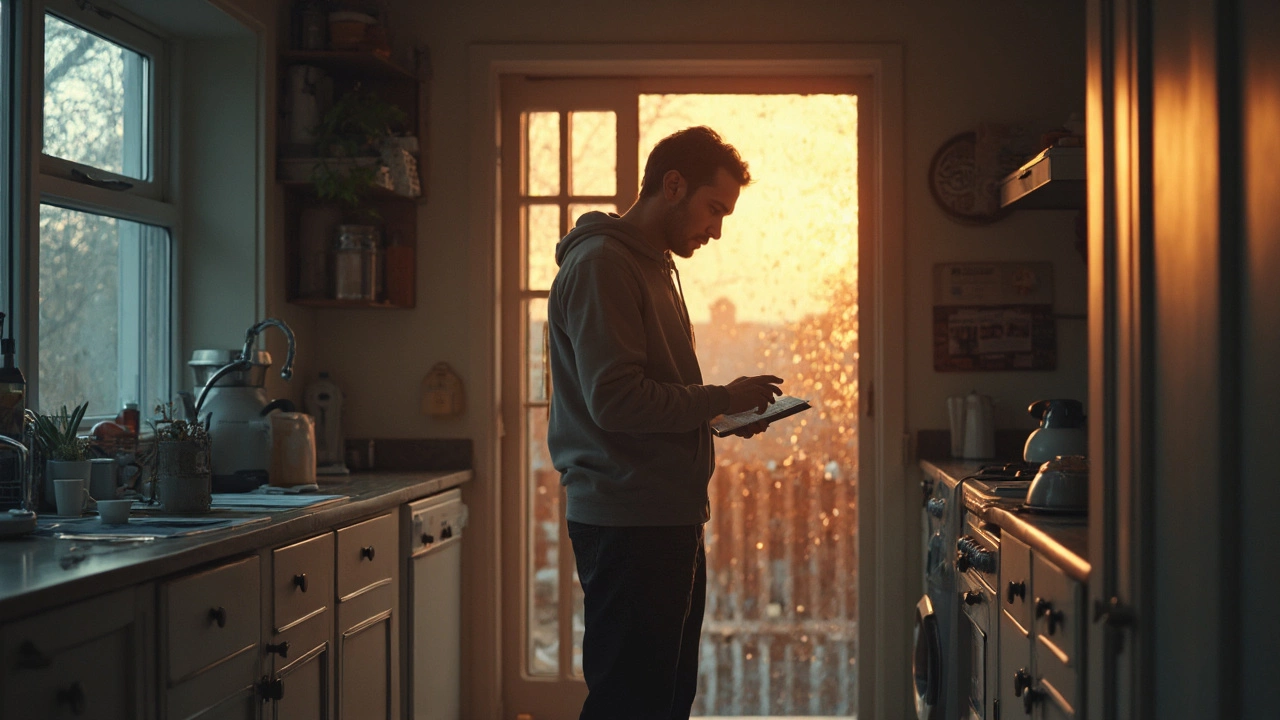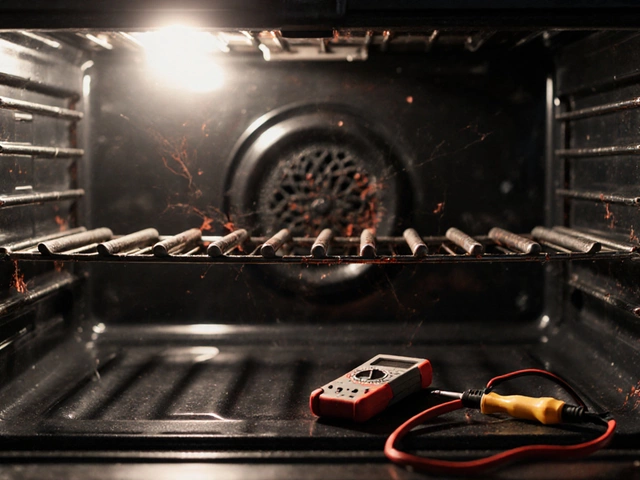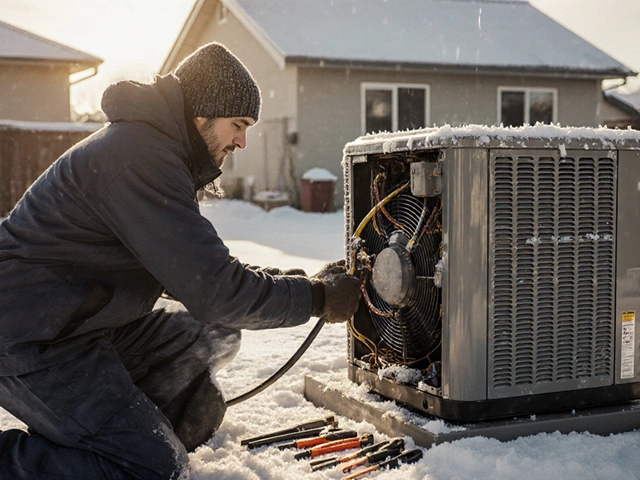No hot water for your morning shower? Most of us don’t think about the water heater until it quits on us. Suddenly, a small metal tank in your basement controls your whole mood for the day. The good news is you might not need to panic—or make a call just yet. Some fixes are easier than you’d expect.
First, don’t assume the worst. Even reliable water heaters get fussy sometimes, and the symptoms—no hot water, strange noises, or funky smells—usually point to clear causes. You can figure out a lot just by paying attention to the basics. Did the pilot light go out? Is a breaker tripped? Maybe a sneaky leak has started.
This isn't just about guessing and hoping for the best. Grab a flashlight and check around the unit for visible leaks, dampness, or burnt smells. If the tank is cold and silent, the problem could be as simple as power or gas. For electric models, a flipped breaker in your panel is often the culprit. With gas heaters, a snuffed-out pilot light or closed gas valve stops hot water in its tracks.
Don’t reach for tools just yet—sometimes the solution is as easy as flipping a switch or relighting the pilot (with caution and by following safety steps). Start with the simplest checks, save yourself some money, and keep your day on track.
- Spotting the Signs of Water Heater Trouble
- Quick Checks for Electric Water Heaters
- Simple Fixes for Gas Water Heaters
- What If Your Water Is Rusty or Smelly?
- When Repairs Aren’t Enough: Replacement Warning Signs
- Calling in the Pros: What to Expect
Spotting the Signs of Water Heater Trouble
It usually starts with a cold shower or a puddle where there shouldn’t be one. Not every water heater problem means it needs replacing, but ignoring early signs can turn a cheap repair into an expensive mess. Let’s break down what to look for before things get worse.
- No hot water: Duh—but don’t miss the obvious. If the water’s stone-cold, your heater’s not getting power, gas, or something broke inside.
- Lukewarm water or running out fast: Could be a broken heating element on electric models, a busted thermostat, or sediment gunking up the tank.
- Weird noises: Bangs, pops, or rumbling often mean sediment has built up inside the tank. That mess acts like insulation, making the burner or elements work harder (and wear out sooner).
- Rusty or smelly water: Brown, reddish, or odd-smelling water might be a sign your tank’s rusting from the inside or bacteria is growing in there.
- Leaks: Even a tiny drip under the tank can add up. If you see puddles or water dripping, act fast—water damage does not wait.
Here’s a quick look at how often these problems happen, based on a 2023 HomeServe USA survey of U.S. households:
| Problem | % of homes reporting yearly |
|---|---|
| No hot water | 32% |
| Not enough hot water | 24% |
| Strange noises | 17% |
| Visible leaks | 11% |
| Rusty/smelly water | 8% |
There’s a reason plumbers get so many emergency calls about water heaters.
“Ignoring early warning signs on your water heater is the fastest way to a flooded basement or an ice-cold shower,” says Andy Pelczar, a master plumber and owner of Pelczar Plumbing, New York.If you spot more than one problem on this list, your best move is to investigate before the issue gets bigger—and pricier.
If your water heater not working is a frequent theme, it’s probably time to do some detective work or plan for a service call.
Quick Checks for Electric Water Heaters
If your electric water heater isn’t doing its job, don’t reach for your wallet right away. Some problems are so common, you’ll feel silly paying someone to fix them. Here’s what you can check yourself, even if you’re not a DIY expert.
- Check for Power: Head to your home’s electrical panel. See if the breaker labeled for the water heater is in the "off" position or looks stuck in the middle. Flip it all the way off, then back on. Water heaters will not heat if the breaker’s tripped. Remember, federal energy surveys show about 20% of home water heater failures are power related.
- Look at the Reset Button: Most units have a reset button under the top panel. It’s usually a bright red button. If the upper thermostat overheats, this button trips. Turn off the power at the breaker first—these wires pack a punch. Press the button. If it clicks, you might be back in business.
- Inspect for Leaks and Burnt Smells: Wet floors or scorch marks near wires mean stop and call in a pro. Water and electricity don’t mix. Don’t take risks here.
- Check the Thermostat Setting: Sometimes the thermostat gets bumped. Most people like it around 120°F (49°C). If it’s way lower, turn it up a bit. Kids in the house? 120°F keeps scalding risks down while still providing hot water.
- Signs Your Heating Element’s Dead: If you’re getting lukewarm water or it’s hot for a minute then cold, one of the heating elements could have burned out. This is common: By year 8, over 30% of electric water heaters need a new element. Replacing one isn’t tricky, but you’ll need a new part and some confidence with wiring. If you’re unsure, flag this for a professional.
Here’s how some typical electric water heater issues break down:
| Problem | Most Likely Cause | DIY? |
|---|---|---|
| No hot water at all | Tripped breaker or blown element | Yes (reset/check power) |
| Water not hot enough | Thermostat set low, faulty element | Yes |
| Water too hot | Thermostat set too high | Yes |
| Leaking heater | Worn gasket/tank issue | No |
If you’ve run through these checks and still have trouble, that’s your sign to call a pro. Don’t mess with wiring if you’re not sure—it’s just not worth the shock, literally. These simple steps catch most power-related issues fast, so you’re less likely to get stuck without hot water for long.
Simple Fixes for Gas Water Heaters
If your gas water heater isn’t doing its job, don’t assume it’s toast. There are a few easy things you can check before calling anyone in. Most issues come down to simple things like gas supply, pilot light, or a safety sensor. Here’s how you can handle the basics yourself.
- Check the Pilot Light: Most older gas water heaters use a pilot flame to fire things up. If there’s no hot water, look at the bottom of the tank for a little blue flame. If you can’t see it, look for instructions stuck on the tank for relighting. Usually, you hold down a reset button and use a long lighter. Keep your face and hands away—gas builds up fast. If the flame won’t stay lit, the thermocouple (a safety sensor) might be out. That’s a cheap fix and easy to swap out if you’re handy.
- Gas Supply Valve: Move the handle on the gas line so it’s parallel to the pipe—this mean the gas is “on.” Smell gas? Don’t risk anything—leave, then call your gas utility right away.
- Thermostat Settings: Some water heaters have a little dial on the outside, usually labeled “Warm,” “Hot,” and “Very Hot.” Crank it to “Hot” and give it an hour. If you still have no hot water, try something else from this list.
- Reset Device or Button: Some modern units have a reset switch or a little circuit breaker by the thermostat. If yours has one, flip it and see if the system kicks back in.
Keep an eye out for leaks or puddles near the tank. If you notice water on the floor or a rusty drip, call for help. Ignoring leaks can cause damage to your home fast.
| Issue | Possible Fix | DIY-Friendly? |
|---|---|---|
| Pilot light out | Relight following instructions | Yes |
| Thermocouple failure | Replace thermocouple | Yes, for most people |
| Gas turned off | Turn gas valve to 'on' | Yes |
| Faulty thermostat | Adjust setting or replace | Sometimes |
| Major leak | Call a pro | No |
Gas heaters can run for over 10 years, but many repairs are simple if you know what to look for. If you smell gas, notice sooty stains, or can’t get the pilot light to stay on even after replacing the thermocouple, don’t risk it—get a professional.
People often forget regular maintenance makes a big difference. Once or twice a year, drain a few gallons from the tank to clear out sediment—this can help your unit last longer and avoid strange popping noises.
Still no luck? At this point, reach out to someone who does water heater repair all day—your comfort is worth it.

What If Your Water Is Rusty or Smelly?
If you turn on the tap and the water is rusty, orange, or stinks like rotten eggs, your water heater is sending you a message. Sometimes it’s just a sign your pipes are old, but more often it’s the water heater not working the way it should.
Rusty water usually means the inside of your tank is corroding. All water heaters have an “anode rod” inside that slows down rust, but once it wears out, the tank itself starts to go. If only your hot water is rusty—not the cold—your water heater is probably the culprit, not the city supply or your pipes.
- Run the cold water for a minute. If it’s clear, but the hot is rusty, the tank’s the issue.
- If both hot and cold are rusty, call your water utility. It’s probably a city water main problem.
Now, if your hot water smells like sulfur or rotten eggs, that’s bacteria growing in the tank. This usually happens if it’s been sitting unused, or if the temperature is set too low (below 120°F).
- Turn the water heater to its highest setting for a couple of hours—this can kill off some bacteria.
- If the smell returns quickly, you may need a new anode rod designed for smelly water (a zinc-alloy type).
If flushing the tank and swapping out the rod doesn’t solve your problem, you’re probably looking at a tank replacement, especially if the unit’s over 10 years old. Ignoring smells and rust won’t make them disappear—in most cases, it only makes things worse and could lead to leaks or even tank failure. Don’t forget to call a pro if you’re unsure what you’re looking at inside the tank.
When Repairs Aren’t Enough: Replacement Warning Signs
Nothing lasts forever, and water heaters are no exception. The average lifespan for most tanks sits between 8 to 12 years—after that, putting money into more repairs starts to make less sense. Some issues just mean it’s time to start shopping for a new one instead of clinging to the old unit.
Here’s how you know your water heater is waving the white flag:
- Water heater not working even after repeated repairs or resets
- Rusty or brown water coming from hot taps (often a red flag that the tank is corroding inside)
- Loud banging, rumbling, or popping noises and these keep getting worse
- Frequent water leaks around the base
- Hot water running out much faster than it used to, no matter what you try
Check out this quick table comparing typical symptoms in old tanks:
| Symptom | Possible Cause | Suggested Action |
|---|---|---|
| Rusty Water | Internal Corrosion | Replace Heater |
| Frequent Leaks | Aging or Cracked Tank | Replace Heater |
| Odd Noises | Sediment Buildup | Flush / Replace If Persistent |
| Multiple Repairs | End of Lifespan | Replace Heater |
| Reduced Hot Water | Faded Element/Heating Core | Replace Heater |
If your tank is over a decade old and one or more signs above keep showing up, don’t risk water damage or wasted energy. Water heaters lose efficiency every year. According to Energy.gov, “an old water heater could be costing you up to 20% more on your yearly energy bills compared to a newer, high-efficiency model.”
"If your water heater is at the end of its life and repair estimates approach half the cost of a new one, it makes financial sense to replace it." – American Council for an Energy-Efficient Economy
So, crunch the numbers: plenty of folks find it cheaper in the long run to buy a new water heater, especially with rebates out there for energy-efficient upgrades. If you’re stuck constantly fixing leaks or dealing with unpleasant water, your old heater isn’t doing you any favors. Upgrading means fewer headaches and lower bills going forward.
Calling in the Pros: What to Expect
If you’ve done all the simple checks and your water heater still isn’t working, it’s time to call a professional. Most plumbers and HVAC techs have seen pretty much every brand and type of heater, so they’ll get down to business fast. Don’t worry about being unprepared—here’s what really happens and how you can get ready.
First things first: be ready to describe what’s happening. Can you smell gas? Is there water on the floor? Did the water suddenly get cold, or did it fade out over days? These details help the tech zero in on the problem faster. If your heater is older than 10 years, mention that upfront, since many tanks start to fail by this age.
When the pro arrives, expect them to:
- Check the electrical connections or gas valve
- Look for leaks, rust, and unusual sounds
- Test the thermostat and heating element or thermocouple
- Verify water pressure and flow
They might bring some high-tech gear, but sometimes a flashlight and multimeter are all they need. After a quick inspection, you’ll usually get a diagnosis and estimate.
For water heaters, repair and replacement pricing can vary a lot based on the problem and your heater’s age. Here’s a snapshot of typical 2024-25 repair costs in the U.S.:
| Issue | Typical Cost Range |
|---|---|
| Thermostat/element replacement | $150 - $400 |
| Pilot light/gas control repair | $100 - $325 |
| Minor leak (valve/gasket) | $120 - $350 |
| Tank replacement (standard) | $950 - $1,750 |
| Flush/service visit | $80 - $200 |
Here are some tips to get the most out of your service call:
- Move anything blocking access to your heater so the tech can work faster.
- Have your warranty info handy if your heater is less than 6 years old—it could save you serious cash.
- Ask for photos of any damage or failing parts. It helps if you want a second opinion or need to deal with insurance.
- If the water heater not working problem involves major tank leaks or rust, be open to a replacement discussion. Old tanks rarely get truly fixed—they just limp along.
Professional repairs are fast—most small fixes take under an hour. Really tricky cases, like swapping tanks, can take a half day. A good pro will explain what broke, what they did, and how to avoid future headaches. With the right help, you’ll have hot showers back in no time.





